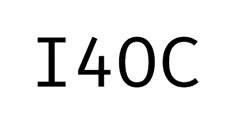Bullying in high school students of Los Olivos, Lima 2014
Keywords:
bullying, students, aggressionAbstract
Objectives: To determine the level of bullying in high school students in an educational institution in the district of Los Olivos. Method: descriptive and a quantitative approach. The population consisted of 101 students between 15-18 years of School “Alfredo Acosta Rebaza” located in the district of Los Olivos. The information was obtained through the survey technique called “This week in the classroom.” The analysis was performed using statistical tables and graphs, built in SPSS 20. Results: a low percentage of students present a level of bullying showing normal parameters. In comparing the level of bullying by gender, it is men who have higher rates of bullying. It was found that 15.3% of male students have suffered from aggressions more than once which leads to a low level of bullying, however only 3.9% of female students show a low incidence of bullying. Conclusions: There is a high level of bullying in the 4th and 5th year of secondary education in the School “Rebaza Alfredo Acosta” in the district of Los Olivos. In the study, levels of bullying are low, and noting that there is a low incidence rate of attacks or that may be prone to bullying.
References
Ávila, H. (2006) introducción a la metodología de la investigación. Recuperado de http://www.eumed.net/libros-gratis/2006c/203/2l.htm
Beane, A. (2006). Bullying Aulas libres de acoso.España: Graó.
Berkowitz, L. (1996). Agresión: causas, consecuencias y control. Bilbao: Desclée de Brouwer.
Camaque Ccahuana, P. (2013).Bullying en los estudiantes del nivel primaria de las instituciones educativas 6004 y 6069 del distrito de Villa el Salvador, 2013. (Magister en Psicóloga Educativa). Universidad Cesar Vallejo, Lima, Perú.
Cano A., Castillo N., Flores R., et al (2008). Manual de Comunidad Segura y Escuela Segura. Países Bajos: Editorama S.A.
Cerezo, F. (1997). Conductas agresivas en la edad escolar. Madrid: Pirámide.
Collins Lozada, M. (2013). Relación entre el bullying y el rendimiento académico de los alumnos del cuarto de secundaria de la red N°3- Mi Perú-Ventanilla 2012.(Magister en docencia y Gestión).Universidad Cesar Vallejo, Lima, Perú.
Fernández, C. (2009). ¿Qué entendemos por “Bullying”?. Recuperado de: http://www.acosomoral.org/pdf/Tresgallo/tresgallo5.PDF
Mackal P. (1983).Teorías psicológicas de la agresión. Madrid: Pirámide
Meri Sernaque, S. (2012).Depresión y bullying en alumnos de 5to y 6to año de primaria de instituciones educativas del distrito de Comas. (Licenciada en psicología). Universidad Cesar Vallejo, Lima, Perú.
Olweus, D. (1996). Conductas de acoso y amenaza entre escolares. Madrid: Morata.
Rivera, M. (2011). Las voces en la adolescencia sobre bullying. Estados Unidos: Palibrio.
Rodríguez, E. (2005). Metodología de la Investigación. México: Colección Héctor Merino Rodríguez.
Downloads
Published
How to Cite
Issue
Section
License
Copyright (c) 2015 PsiqueMag

This work is licensed under a Creative Commons Attribution-NonCommercial-NoDerivatives 4.0 International License.
You are free to:
- Share — copy and redistribute the material in any medium or format
- The licensor cannot revoke these freedoms as long as you follow the license terms.
Under the following terms:
-
Attribution — You must give appropriate credit, provide a link to the license, and indicate if changes were made. You may do so in any reasonable manner, but not in any way that suggests the licensor endorses you or your use.












